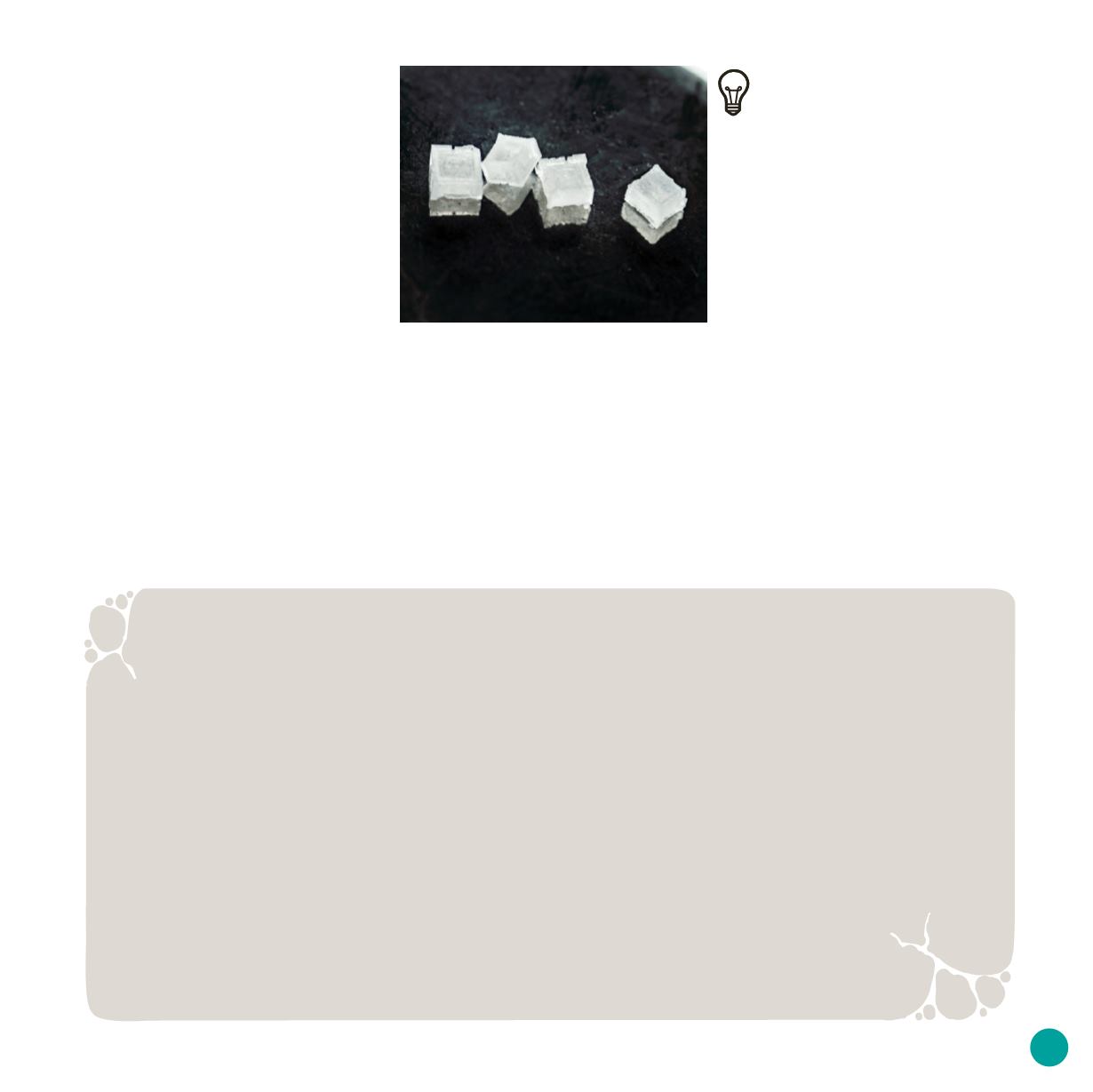
11
PROTOCOL
STEP 1:
First make a seed crystal by
pouring a small amount of saturated salt
solution onto a saucer or shallow bowl.
As the liquid evaporates, crystals will
start to form, usually overnight. Select a
single square crystal and remove it from
the dish.
STEP 2:
Carefully pour the saturated salt
solution into a clean container (making
sure no undissolved salt gets in), allow
the solution to cool, and then hang the
seed crystal with string in the solution
from a pencil or knife placed across the
top of the container. You could cover the
container with a coffee filter or paper
towel to keep out dust yet permit evap-
oration.
The hardest part of this experiment is tying the
thread around your seed crystal. But without the
seed crystal, it’s hard to get much more than crusty
salt. The perfect seed crystal gives the extra salt
in your solution perfect little places to attach to,
and will keep the crystal structure growing. This is
the crystal lattice we discussed earlier. Salt has a
perfectly cubic crystal lattice. It measures the same
distance on all sides, no matter how big or small.
Salt is pretty simple. It has one sodium atom (Na)
and one chlorine atom (Cl), clustered together over
and over, to form a salt molecule. Thus the formula
for salt is easy: NaCl. In the crystal lattice, the atoms
repeat in every direction. Where there is a Cl atom
showing, an Na atom can attach, and vice versa.
Salt is mined in many ways. In some places, solar
evaporation of salt water produces salt crystals.
There are also underground mines in salt domes
where miners scoop up salt crystals or cut slabs of
hardened salt into blocks. Some specialty shops sell
salt from all over the world.
THE SCIENCE BEHIND THE FUN
STEP 3:
Set the container in a location
where it can remain undisturbed. You
are more likely to get a perfect crystal
instead of a mass of crystals if you allow
the crystal to grow slowly (cooler tem-
perature, shaded location) in a place free
of vibrations. It can take a week or more
to get a big crystal.
Creative Enrichment
1. Experiment with different types
of table salt and water. See if
there is any difference in the ap-
pearance of the crystals.
2. If you are trying for the “per-
fect crystal” use un-iodized salt
and distilled water. Impurities
in either the salt or water can
aid in
dislocation
, in which new
crystals don’t stack perfectly
on top of previous crystals.
3. Make a mass of crystals by
pouring the saturated salt
solution into a clear container.
Let it slowly evaporate. Crystals
will grow on the sides of the
container.


